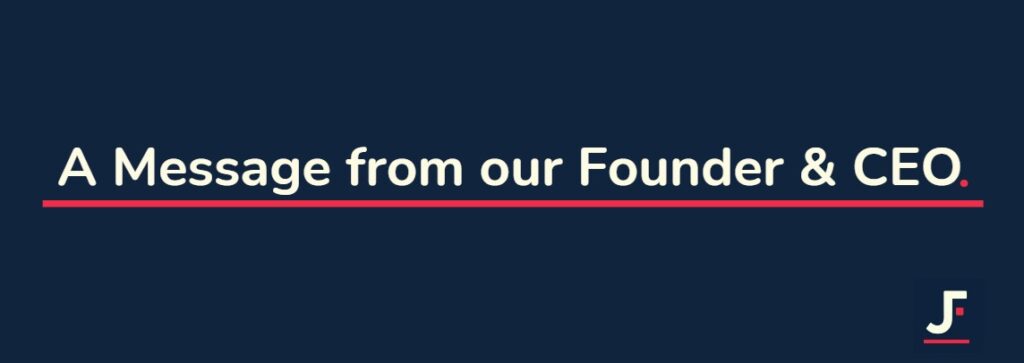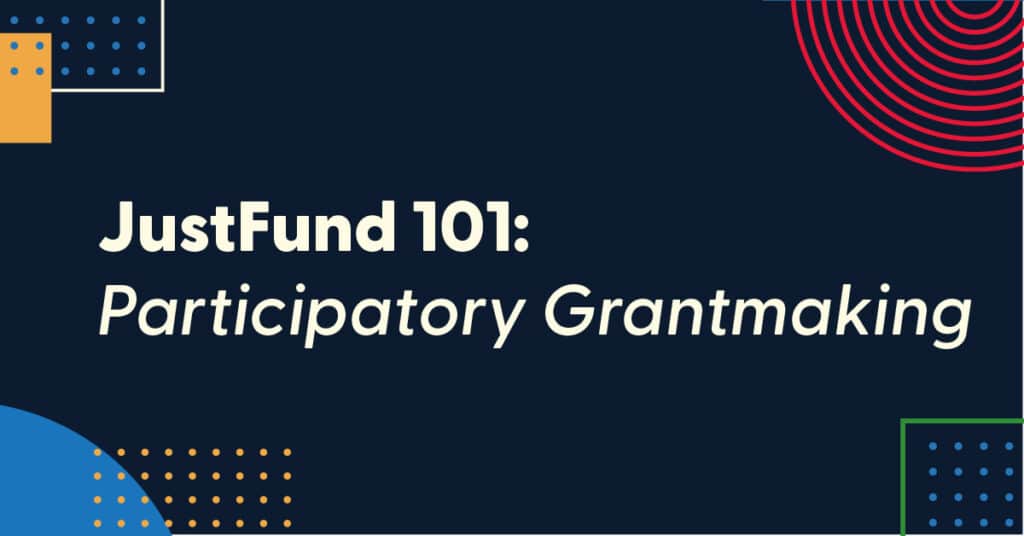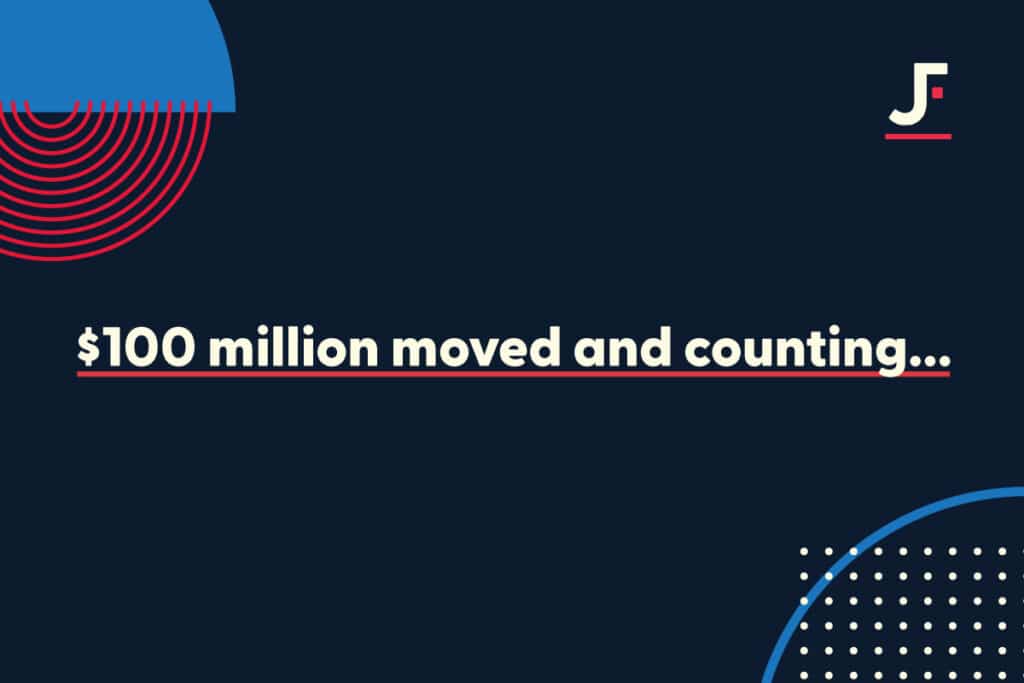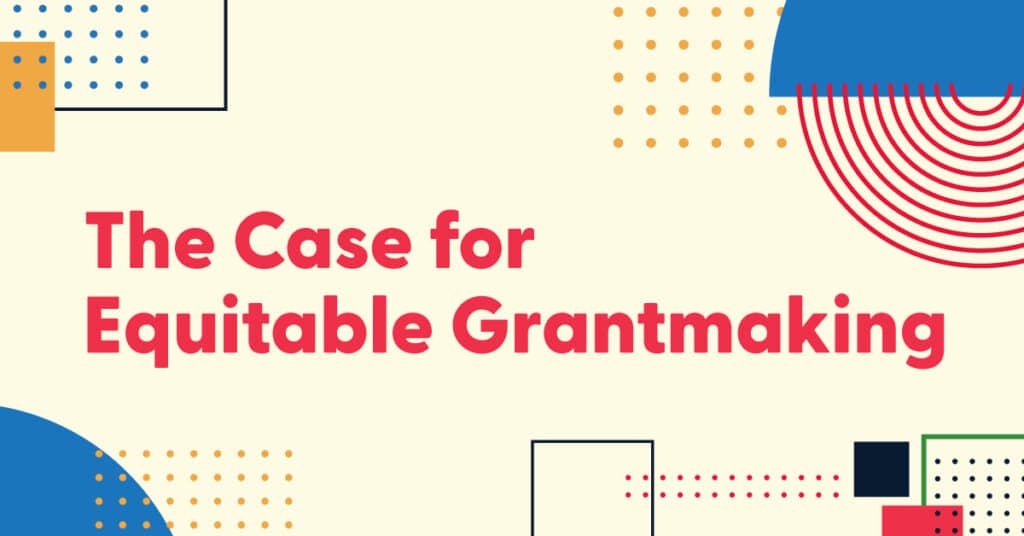Blog Post

How JustFund Is Using Trust and Technology to Reimagine Philanthropy
This article was originally published by PEAK Grantmaking, a member-led association of philanthropy professionals leading the way in advancing equitable, effective grantmaking practices.
For over 25 years, my career has focused on building and scaling social justice nonprofits. I set off on this path in 2001, when a group of donors from The Philanthropist Workshop hired me to build a donor and activist-led collaborative fund called the Youth Justice Funding Collaborative (YJFC). We ran a cross-class giving process with organizations sending in their applications over email. I set up folders for each applicant, built a spreadsheet for scoring, created and sent dockets, communicated with grantees along the way, coordinated the grant disbursement, made sure the groups got their funding, and collected reports at the end of each year. This process took most of my time over the course of several months every year, which left little space for building relationships with leaders, planning learning events for our members, or engaging in donor organizing that could grow our pool of resources.
Sound familiar?
Eventually, I sought to better understand why money from other funders wasn’t flowing to the communities and leaders of color like the ones YJFC supported. I became the chief strategy officer at Solidaire Network, an organization of donor organizers committed to moving money in solidarity with social movements. I hoped to see more efficient grantmaking systems in place. However, I was surprised to see laborious grantmaking processes similar to those I utilized 15 years earlier.
We needed to ensure that our practices aligned with our values so that our applicants—mostly organizations led by or serving those who identify as Black, Indigenous, or people of color (BIPOC)—could have access to more funding. We knew that our applicants were seeking funding from other funders, each with a different application process—a time-consuming burden that was taking time and focus away from doing impactful work on critical issues.
What if there was an easier way for groups to apply for funding? How much more money would move if applications could be seen by other donors and funders? What if there was a way to track collective funding and see goals and gaps in real time? What if all the extra application steps were eliminated and funders just funded incredible groups doing powerful work in their communities?
The common application revolution
Money moves at the speed of trust. When donors in Solidaire’s network told other donors about leaders they met or new projects they were funding, our community jumped in to fund that work together. That organic rapid response funding model is still one of the most celebrated programs at Solidaire.
I tried and failed a couple of times to bring organizations into an online database so that our members could see all of our applicants and we could track aligned giving. However, groups didn’t want to take the extra time required to input their data into a new system, even if we prepopulated the database with the information in their application. On top of that, it was difficult to convince donors to migrate to a new technology.
Money moves at the speed of trust.
In 2017, Solidaire, The Emergent Fund, and Defending the Dream Fund decided to try something new. We took the plunge and agreed to use a common grant application that—in a worst-case scenario—would save a few hundred applicants time and labor. Best case scenario, we could revolutionize our grantmaking approach and provide a new model for philanthropy.
We built an application that all three funds would accept based on the least amount of information we actually needed in order to make a grant. We also built a tagging system that allowed us to understand who applied and who we funded. Eventually, this system made it easy for other funders to find—and fund—frontline organizations doing critical work on the most pressing issues facing our nation.
I started working with a designer and developer. In fall 2017, we put the beta version of our common grant application platform—JustFund—out into the world. The three funds launched their grant cycles using this new application and more than 800 organizations used the platform. Many applied to all three funds, and by the time we closed the grant cycles a couple of months later, we had saved those organizations over 2,000 hours.
Innovations in philanthropy can create seismic shifts in our processes and practices and dramatically change the way money moves.
Fast forward to today, and JustFund is now a nonprofit organization that works with more than 100 collaborative funds, donor networks, community foundations, national foundations, corporate foundations, and family foundations. Our partners include values-aligned funders such as Decolonizing Wealth, Donors of Color, Silicon Valley Community Foundation, Siegel Family Endowment, Zoom Cares, and NorthLight Foundation who run their grant cycles using the JustFund Common Application. Together, we have moved over $225 million to historically excluded organizations, mostly BIPOC-led, BIPOC-serving organizations working in the South and with less than $500,000 in income. To date, JustFund has saved organizations a collective 269,775 hours of work that would have otherwise been spent applying for funding. That’s equivalent to 31 years.
Time is power and the JustFund platform puts power back in the hands of frontline leaders doing critical work. Our JustFund community has grown to over 100 funds utilizing the common grant application, and our growing database of applications is now searchable by dozens of filters, including BIPOC-leadership, focus area, and budget size, so that funders can find and fund organizations more quickly.
Innovations in philanthropy can create seismic shifts in our processes and practices and dramatically change the way money moves. JustFund has shown that new technologies can help drive more resources to communities that need it, while simplifying once overly complicated processes. When you look around, we see chronically underfunded communities struggling, and they don’t have to. When we collectively change the way we give, our historically excluded communities can thrive.







